Mark is a young adult who likes to ride bikes. He goes into an XYZ store to look at their bike range. The tagline of the store is – ‘Screw it, let’s ride.’ Mark feels very enthusiastic and energised reading it. He observes that the store is also rustic and wooden. The colour of the bikes, the bold font, the badges and pins on the biker jackets on display, everything gives mark a feeling of empowerment, passion, and enthusiasm. A sales employee also tells Mark about their customers’ family group, through which all customers across the United States go for bike rides to varied terrains, sponsored by XYZ. They receive a whole lot of certificates, awards, medals, and badges upon completion of certain segments of the travel. The idea of the family group gives Mark a feeling of compassion and risk, community and individuality, warmth, and passion. Mark is motivated to lock XYZ to make the final purchase.
Any guesses on which brand is XYZ?
XYZ is Harley Davidson, one of the top companies with a great brand experience. Harley Davidson is known for not selling bikes, but an entire holistic brand experience signifies with passion, power, unity, and boldness.
What Is Brand Experience?
Brand experience is awakening a holistic sensory experience to build an all-rounding relationship between customers and a brand.
The business uses every customer touchpoint to develop a holistic brand experience. The journey may differ from customer to customer, but the experience doesn’t, as this experience is what results in the development of the brand image.
And brand image needs to align with the brand identity, always.
Take Starbucks, for example.
Let’s say customer A got to know about Starbucks by coming across a Starbucks outlet. This is the first touchpoint. Without even buying from the store, the constant green-brown colour, basic logo, variety in menu, relaxed seating arrangement, free-wifi, sleek machinery, etc. portrayed strong feelings of adaptive style, innovation but basic. Starbucks, in the first instance, attempted to create an experience of one-stop for a quick coffee and one-stop for a long hangout with friends.
Then came the customer interaction and subsequent touchpoints.
The experience included selecting a coffee, personalising it with a name, fast-paced counter, waiting on a comfy sofa, having the name called out for the exceptional coffee and enjoying it with free wifi, and an edgy vibe.
Now, the brand makes sure this experience remains the same for customers B, C, and D as well, which will result in building a standardised experience significant of – trend, comfort, edginess, and personalisation. Overall it has a ‘feel-good’ factor to its brand experience. A customer doesn’t buy a coffee anymore; he buys a ‘Starbucks’.
The expression “brand experience” has become famous the same way number of different terms in the marketing businesses did, which is with the development of the media used to impart a brand’s message or story.
Brand experience is associated with specific products or organisation names. Through the brand experience, organisations try to curate a set of emotions that lead to a predefined brand personality.
And this personality results in a relationship between the brand and a particular need or feeling.
Brand experience is about the ‘emotive inclination’ from experience, regardless of whether physical or computerised. Media might be a component planned for driving impressions and engagement around the experience. Yet, brand experiences are not media-driven, per se, rather enhanced by media, whether employing social influencers, computerised means, social means, print ads, etc.
Why Is Brand Experience Important?
In this era of consistently high competition, brand experience is what summon affectionate feelings and sentiments, regardless of whether it is a most loved children’s clothing brand or a top magazine membership you happily renew each year.
But why at all is brand experience vital in today’s time and age?
Provide A Deeper Meaning To The Offering
Brand experience provides a deeper meaning to an offering and the brand behind it.
Take the energy drink brand, Red Bull, for example.
At the end of the day, Red Bull is selling glucose and caffeine in different flavours. That’s pretty uni-dimensional. But then why does it rank as the top energy drink in the US? It is the brand experience that lifted the mere energy drink brand to one associated with ‘wings’ – ideas, enduring, inspiring, and sporting. Hence, brand experience is vital to building a multi-dimensional brand, one that awakens feelings, thoughts, and actions in the consumer.
Build Brand Perception
Brand perception is how a customer sees the brand. Brand experience is what makes the customer think of the brand whenever he witnesses –
- Offering related keywords: Customers often think of Johnson and Johnson whenever they witness baby products.
- Brand related emotions: Coca-Cola is the go-to brand wherever there’s happiness.
Enhance Brand Loyalty
Brand experience is immensely important because it results in brand loyalty. Retaining consumers is perhaps much more important than drawing new ones. As research has proven, consumer acquisition is 5 – 25 times more costly than retaining existing customers.
Apple is an excellent example of brand loyalty through brand experience. Apple has well-established features like camera quality. None of its present marketing strategies focus on technicalities of Apple products, but rather on –
- What Apple stands for?
- What are the values associated with an iPhone – urban high class, chic, different from the clutter, etc.?
To Stand Out Of The Clutter
Brand experience is essential for a brand to be able to stand out and attract positive attention. Numerous businesses enter the industry with a lack of a crisp strategy.
Having a brand experience in today’s times expands to having a value associated with a brand. Through a strong brand experience, customers and clients can pick on positive and strong cues such as – image and vibe.
Awful experiences with a brand are what turn into a lost opportunity and obliterate the brand. Therefore, to create a strong brand experience, organisations should win the hearts of their customers.
How To Create A Brand Experience
Though the creation of a brand experience may vary from industry to industry, a few commonly used effective steps to create a winning brand experience are:
Set A Purpose – Mission statement
A brand experience should center around what the brand stands for. The best way to do this by creating a mission statement. A mission statement would define the objective, goals, and aims of the brand. This is what will guide your brand’s marketing, target audience, vision statement, but above all –
‘its brand experience’.
For instance, Amazon’s mission statement is – “We strive to offer our customers the lowest possible prices, the best available selection, and the utmost convenience.” The mission statement shouts for low prices, top-notch product base, and convenience. And today, this is essentially the brand experience that Amazon brings with it.
Know Your Audience
Put yourself in the brain, shoes, and heart of your client. One of the advantages of the web, and particularly of artificial intelligence now accessible for client support communications, is –
“the open doors it creates for assembling more and better information about a target audience”.
To ascertain the target audience, a few helpful questions could be:
- What are consumers’ extensive interests?
- By what method can a brand authentically partner tie itself to those interests?
- What are their demographics?
- What experiences work for them?
- Are they living your brand?
For instance, Nike manufactured a realm by being merely a shoe brand as well as one that speaks to a whole accomplishment situated way of life. Likewise, Starbucks is situated not just as a spot to get some espresso but also as a representative of a specific point of view toward society, of a young, edgy vibe that can serve you well for fun and work.
Create And Inspire Emotion
Consumers need to see that the organisations and items they support have an actual existence. Your brand should build a character, and an enthusiasm to which consumers can relate.
Organisations can no longer stand to set up billboards and TV ads among themselves and the client. Instead, you have to focus in and get included.
Brand experience is all about building relationships with the consumer. Relations are characterised by emotions. Whether a brand experience offers a sharing and caring emotion like Coca-Cola, or a fearful and cautious sentiment like PETA (People for Ethical Treatment of Animals), it is essential to ponder upon what’ feeling will be associated with your brand’.
Engage With Your Customers
Engagement is the core of building a brand-consumer relationship. Luckily, resources today help build this engagement easier than you can imagine. The digital perform is the one where, with just little effort, a rich client relationship can be built.
Social campaigns – The Dove Real Beauty campaign across the United States, helped Dove add a sense of authenticity, trust, and a non-judgemental factor to its brand experience. It still is a bar of soap at the end of the day. But its also so much more than that!
Social Engagement –Cadbury India launched discussions and open-thoughts on suggestions for a new flavour for its next chocolate bar. For this launched a dedicated platform where any customer could select ingredients, create a unique bar recipe and Cadbury would try all suggested recipes, and select the top one.
Direct Discussions – A great example of this can the ‘let’s do lunch’ initiative by Dominos in the UK in 2012. Dominos asked people to add the hashtag #letsdolunch on all of their tweets and promised huge lunch discounts for that day to all participants. The number of tweets and re-tweets during this initiative rose to a good 82,500 approx., thereby boosting an edgy brand experience for Dominos.
Influencers
Today, influencers play a significant role in triggering brand perception.
Consumers depend vigorously on the suggestions of real people’s experiences via web-based networking media more than experts. By partnering with an influencer who has confidence in the company and whose interest, reverberation, and commitment meet the company’s prerequisites, the company profits from his/her followers.
Though not a mandatory step, the use of influencers for marketing for a brand aids in the development of trust, authenticity, and credibility to a brand’s character. And having such associations with a brand’s character is the strongest step toward building a brand experience.
Research Competitors
A company’s objective should be to separate from the opposition, to persuade a client to buy from them over others! They should research their primary rivals or benchmark brands. For example, concentrate on how well they have approached assembling a brand name. Competitor research is a key component of brand success. This can be done by making a brand contender spreadsheet for comparison, as given below.
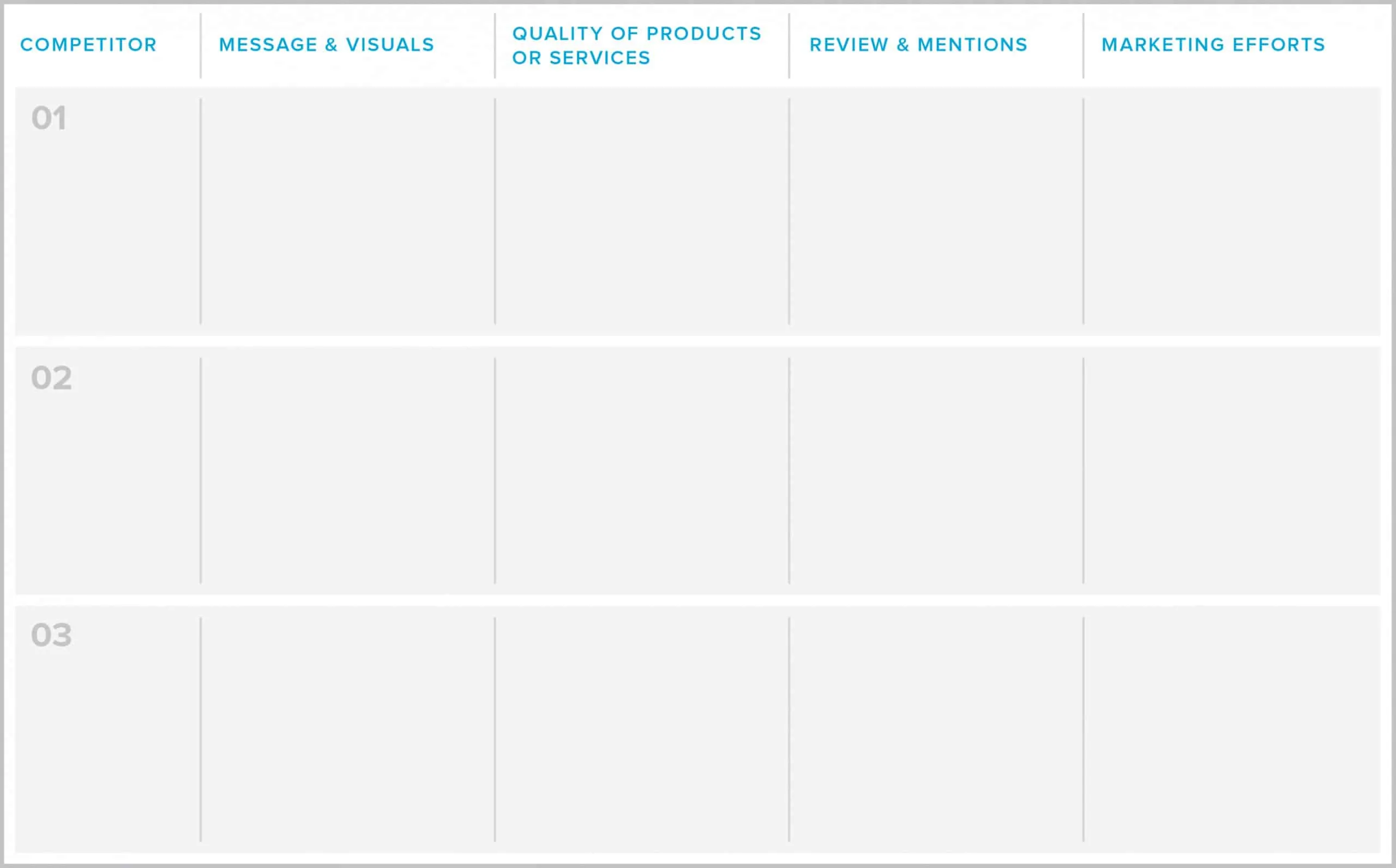
Brand Experience Strategy
Now that the meaning, importance, and steps for the creation of brand experience has been established. This section deals with what strategies to chose as the focus of the creation of a killer brand experience. Every brand must strive to adopt a strategy that imbibes the essence of the brand itself. What are the available strategies to do so?
Live Experience
According to a study, being part of a live experience hosted by a brand increases the chances of brand recommendation by 65% and purchasing chances by 59%. Live experiences are a supreme way to interact and involve your consumers. A live experience refers to a live event engaging existing and potential consumers with the brand experience at its core. The advantages of building a brand experience through a live experience are:
- It absorbs the audience through all senses. It’s an audio-visual feel to the brand.
- It builds social connectivity, with the brand as the ‘hot topic’ of talks.
- It includes a ‘stickiness factor’. The stickiness factor refers to an event being memorable and etched inside the minds of the participants.
Design Thinking
Design thinking is a brand experience strategy designed to promote innovation. It is a consumer-centric way involving:
- Collaboration with other brands or with consumers themselves
- Surveying and mapping the consumer journey to develop a better brand experience
- Prototyping and beta testing. Through prototyping and beta testing, brands can test the response and functionality of a product by releasing the product temporarily in-house and to a limited set of real consumers.
Top brands with a great brand experience such as Apple, Nike, etc. have set the standard for design thinking in today’s times. Among the 24 principles of design thinking, the most relevant to brand experience is –
“breaking through the noise”.
Design thinking involves being empathetic and thinking from the user’s perspective. The design thinking framework makes use of user data, including – interviews, surveys, contextual inquiries, and user groups. The ultimate goal is to truly understand your customer’s needs and desires. The process focuses on eliminating whatever is irrelevant to the brand story. From unnecessary colors to sarcasm to fictitious references, etc. whatever does not seem eye-catching and relevant must be scrapped off.
Personalisation
Customisation has become a huge trend in driving brand experience and consumer experience. Why is personalisation a great strategy for building brand experience?
Personalisation helps in conveying a more empathetic and relevant feeling of the brand. This is because, toward the end, a consumer will not remember what they were told or what they saw as well as they would remember how they felt.
Creating a customised brand experience requires extensive research to identify the target audience and buyer persona. After there is adequate information on what the buyers’ interests, needs, and requirements are, a brand can adapt its mission statement accordingly.
Storytelling
Stories are, by far the most effective way to build a brand experience. As the next section of examples will indicate, companies with a powerful brand experience attach a strong story to themselves.
To inculcate storytelling to build a brand experience, one must follow the steps from the earlier section –
- Create a mission statement,
- inculcate storytelling to build a brand experience,
- Infuse emotion,
- Ascertain the target audience,
- Engage with the target audience, and
- Research competitors.
Once all these steps are successfully completed, a company must attempt to link the mission statement and related emotions and values with the target audience.
For instance, if XYZ is a pet product company
- The mission statement is ‘speaking for the ones who cannot speak for themselves.’
- Common beliefs of the target audience are that all pet products are usually for general breeds and sizes and not specific to their pets
- The brand can link these two to stand for the fact that they customise products, provide more varieties catering to the specific needs of different breeds and sizes of pet animals. The brand cares for the animals and believes that if human beings can have things according to individual differences, pets should too. They deserve love and all the customisation that XYZ strives to provide.
Brand experience examples
Coca-cola has built a widespread and strong ‘share the happiness, share a coke’ story. The brand experience includes – Happiness, sharing, and caring, fun, and love. The share a coke campaign that started in 2011, demonstrated personalisation, and empathy toward its consumers. It also grew to sell 150 million bottles only in the year 2014!
Amongst other cola drink brands, coca-cola managed to build a unique brand experience characterised by sharing and happiness with, of course, its product at the center. Coca-cola made extensive use of two strategies:
- Building a multi-dimensional image
- Linking emotions to their product
To understand the use of these two strategies better, think about what does coca-cola sells? Does it really sell happiness?
No.
It sells a cola drink, with different variants. But by using a multi-dimensional image, they expanded to create an experience of not just fizzy cola, but friendship and happiness. Today, across all age groups, one cannot imagine a party without coca-cola. The multi-dimensional image is created by going beyond the basic utility of the product and giving it a character and personality of its own. The second strategy is the linking of emotions. Coca-cola, through its advertisements, its taglines, and campaigns, built an experience centered around the emotions of – happiness, love, caring, and sharing.
X-box – Survival Billboard
The X-box survival billboard, though a promotional advertising strategy, added to the story of the brand experience of X-box. The brand created a challenge where eight members randomly chosen from the sign-up participants received, had to perform a stunt on their ‘Survival Billboard’. What X-box did is create a brand experience with:
- Design thinking strategy – By transforming a regular billboard into a survival billboard, they thought ‘out-of-the box’ and empathised with their target audience. What go users of X box like? Games, adventure, and risk. The survival billboard placed all of the emotions of the users into their brand experience.
- Storytelling – The survival billboard was not just any billboard with fun and adventure. It had a story. A story of participants who endured numerous tests to reach the finale. A story of their survival. A story of X-box hosting the survival billboard challenge, accepting votes and polls from across the nation, and declaring a winner.
- Personalisation- X-box brilliantly personalised their entire consumer experience for the user. Users were allowed to be participants and voters. The participants and voters were given a chance to feel like they could change the game. They had a say in how this goes forward. The experience was customised to their wish.
They combined their mission statement – “We believe in uniting gaming communities where you can play, compete and connect with friends, wherever they are” with their target audience (gamers) requirements – “Innovation, competition, adventure and fun” and came up with the innovative idea. After the survival billboard, X-box is seen as a brand that delivers the experience of fun, innovation, and adventure.
Netflix – Entertain The World
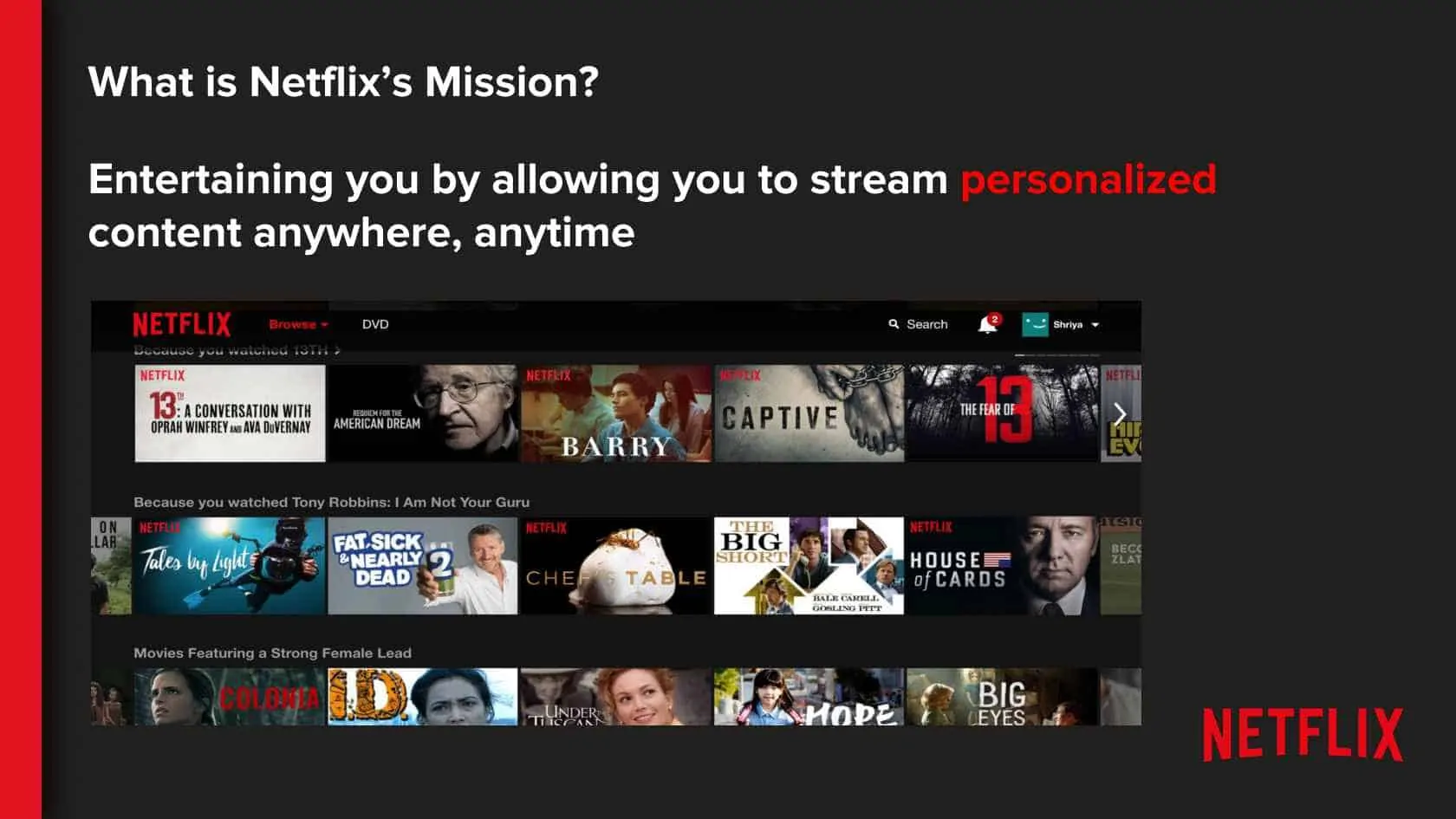
Netflix, alone, occupied 35% of the internet traffic in North America in 2016. Netflix’s mission statement – “to entertain the world” conveys a global, dedicated, and entertaining idea. Netflix adopts the brand experience strategy of ‘personalisation’. Netflix never stops personalising. It employs the following approaches:
- Design thinking – By means of design thinking, Netflix placed itself in the shoes of the consumer. What do people like to watch? How do people decide what to watch? After extensive user research, surveys, and response analysis Netflix provides content suggestions similar to content a user is watching or has watched in the past.
- Personalisation – As a business, it tries to keep the user tied to itself by constantly curating an account according to the preferences of the consumer. To boost the brand experience, Netflix shows that it deeply cares and values the customer’s choices and preferences. It is almost like -“we will curate your account, especially to help your likes and interests. All just to make your entertainment viewing with us worthwhile”.
Netflix’s customer-centric approach has only strengthened over time. Because of which today, it is known to deliver an experience curated just for an individual customer – personal, easy, custom, and fun, all according to one’s views, likes, and dislikes.
Go On, Tell Us What You Think!
Did we miss something? Come on! Tell us what you think about our article on brand experience in the comments section.
A marketer with a specialisation in Economics, Law and Computer Studies. Performed social media marketing for McDonald’s, GoIbibo, and LaughGuru.

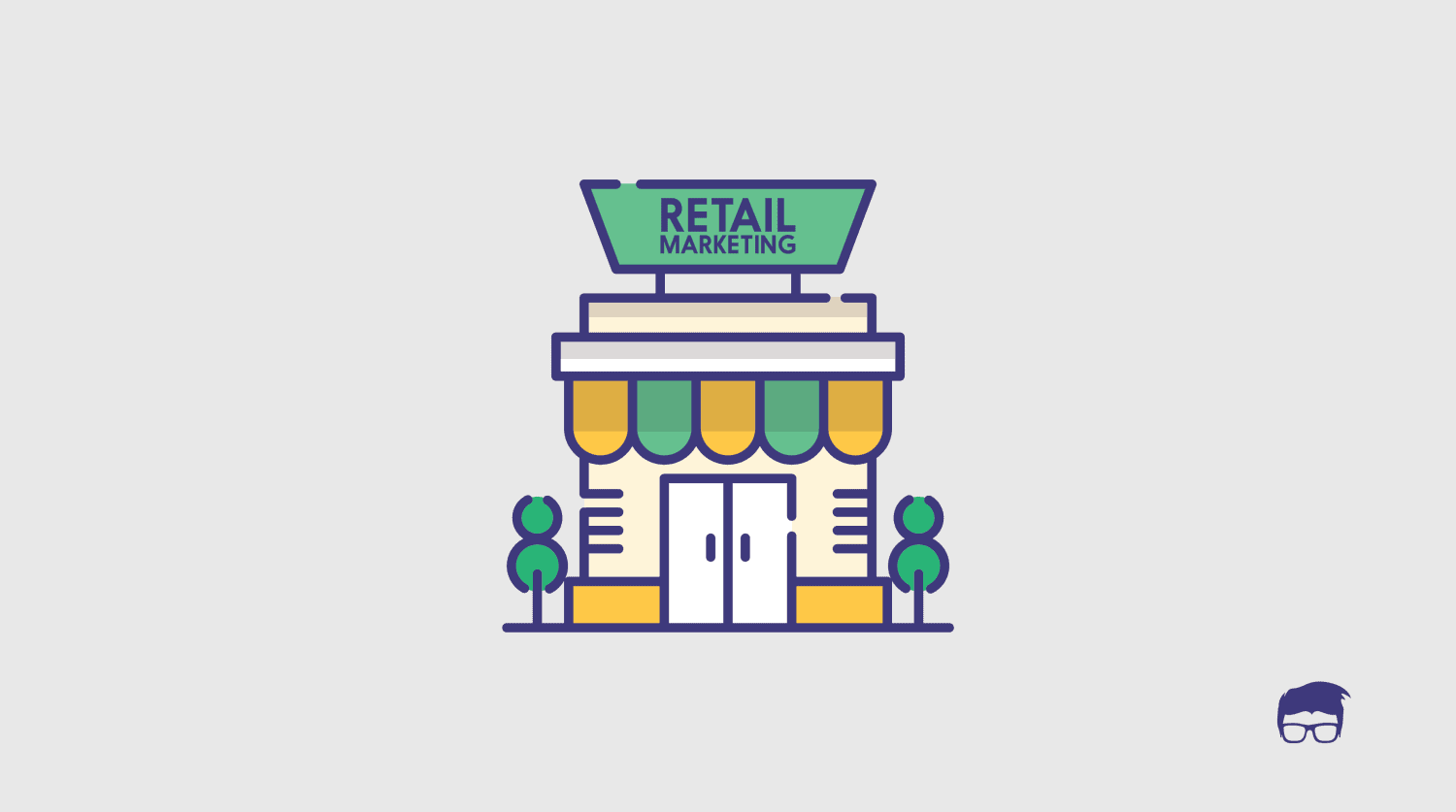

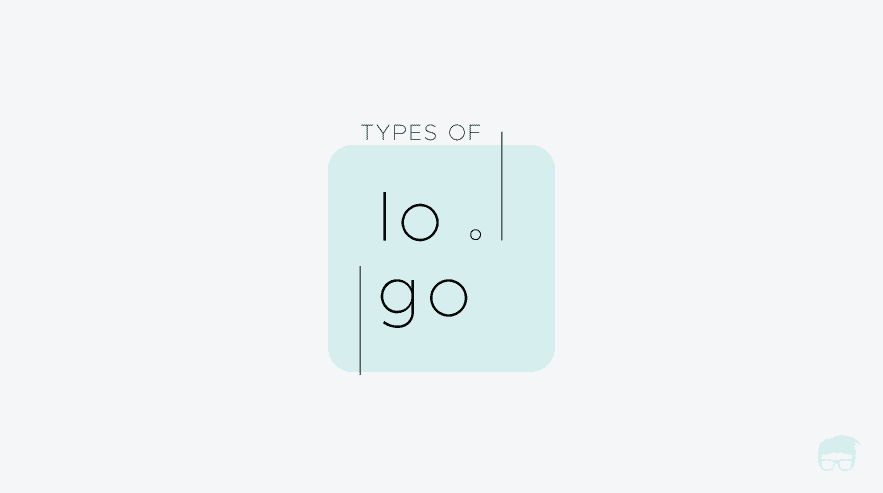

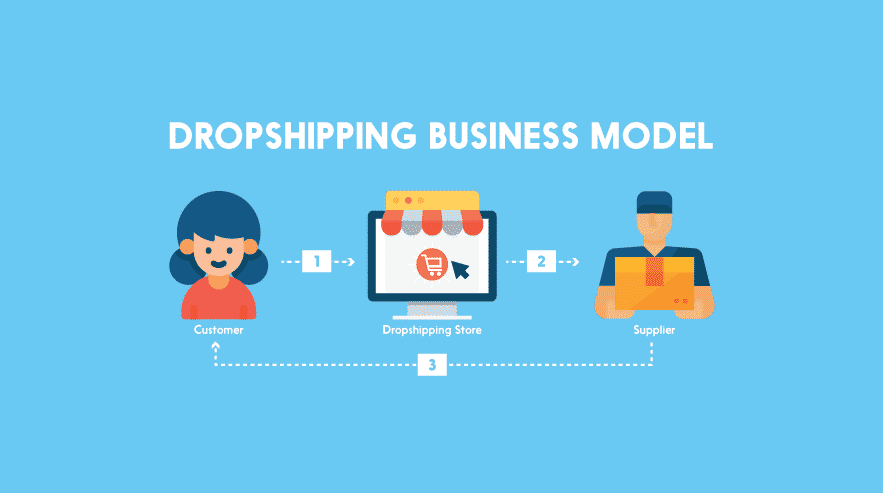
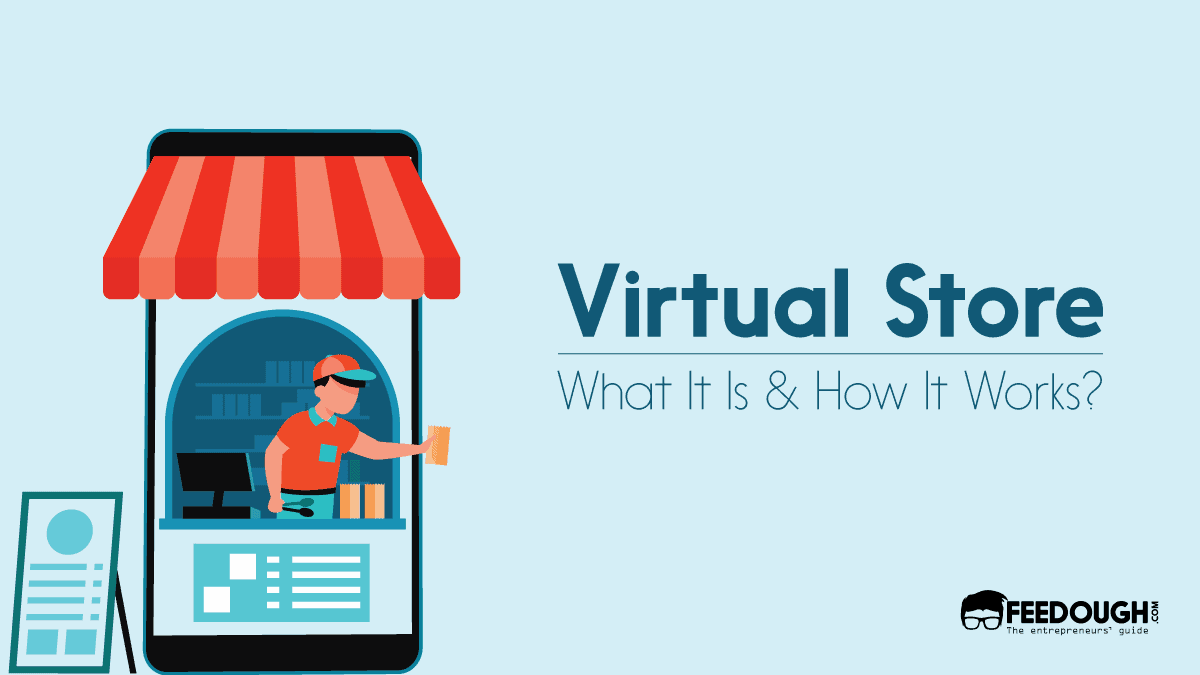

![What Is Visual Identity? [Detailed Guide] visual identity](https://www.feedough.com/wp-content/uploads/2022/09/visual-identity.webp)
